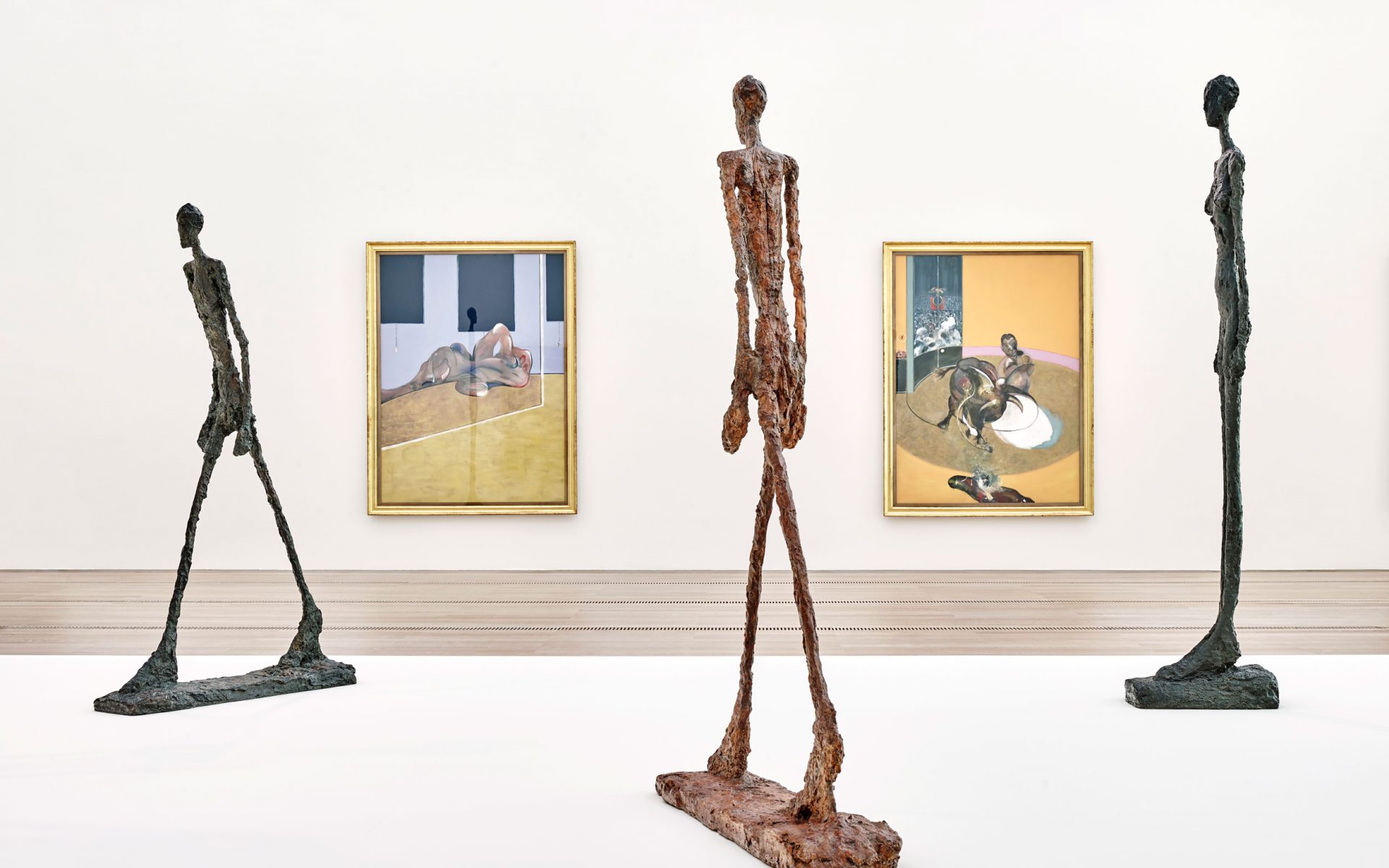

Bacon and Giacometti Go Head to Head In Spellbinding Basel Show
A show at the Fondation Beyeler explores the connection between two of the biggest names in postwar art
The human body, in all its deformation and fragmentation, was an ongoing obsession for artists Alberto Giacometti (1901-1966) and Francis Bacon (1909-1992), the former through sculpture, the latter in painting. Both were concerned with philosophical inquiry into the complex human psyche.
The varying handling of the subject by the two titans of 20th-Century art is on view side-by-side in “Bacon-Giacometti,” a fascinating comparative exhibition that recently opened at the Fondation Beyeler in Basel, Switzerland, causing a stir among a hard-to-ruffle crowd during the opening this week of Art Basel.
Curated by the director of the Giacometti Foundation Catherine Grenier, Francis Bacon specialist Michael Peppiatt, and German art historian Ulf Küster, the show comprises around 100 paintings and sculptures loaned from major museums and private collections in Europe and the United States as well as the foundation’s own collection, which holds important pieces by the artists. (Its founder, Ernst Beyeler, knew both artists personally.)
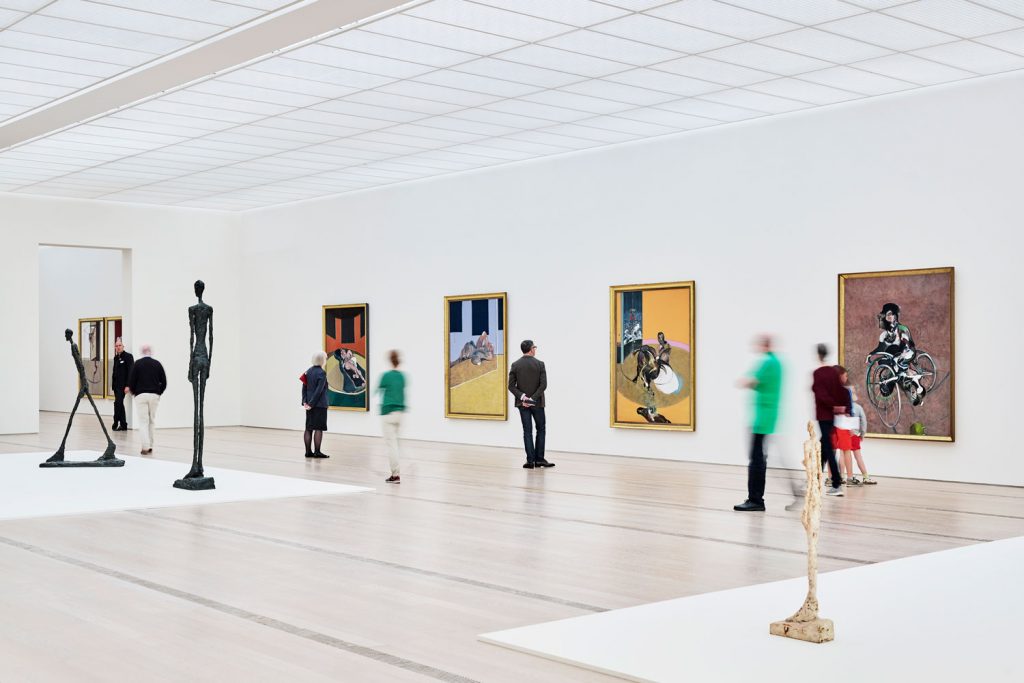
“We wanted to create an exhibition that brings both their work together because we find that there is not only a deep connect in their work but also their personalities—and not just because they knew each other,” the director of Fondation Beyeler Sam Keller told Galerie. “These kinds of exhibitions help you to discover through the work of one aspects in the work of the other that you wouldn’t otherwise see.”
Recommended: The Ultimate Art Insiders’ Guide to Art Basel
The show kicks off with a selection of photographs and memorabilia from the life of both artists—photographs of Bacon and his lover George Dyer and Giacometti with painter Isabel Rawsthorne who was Giacometti’s lover and a model for both artists during different periods, and through whom the two artists are said to have met in the early 1960s.
Unexpected similarities between the work of the two artists are then laid out thematically in the exhibition. The artists both had an obsession with the portrayal of the human head, a reverence for restless movement in painting and sculpture, and a consistent depiction of themes of love, loss and violence—Giacometti in melancholic gray tones, Bacon’s in vibrant slashes of color.
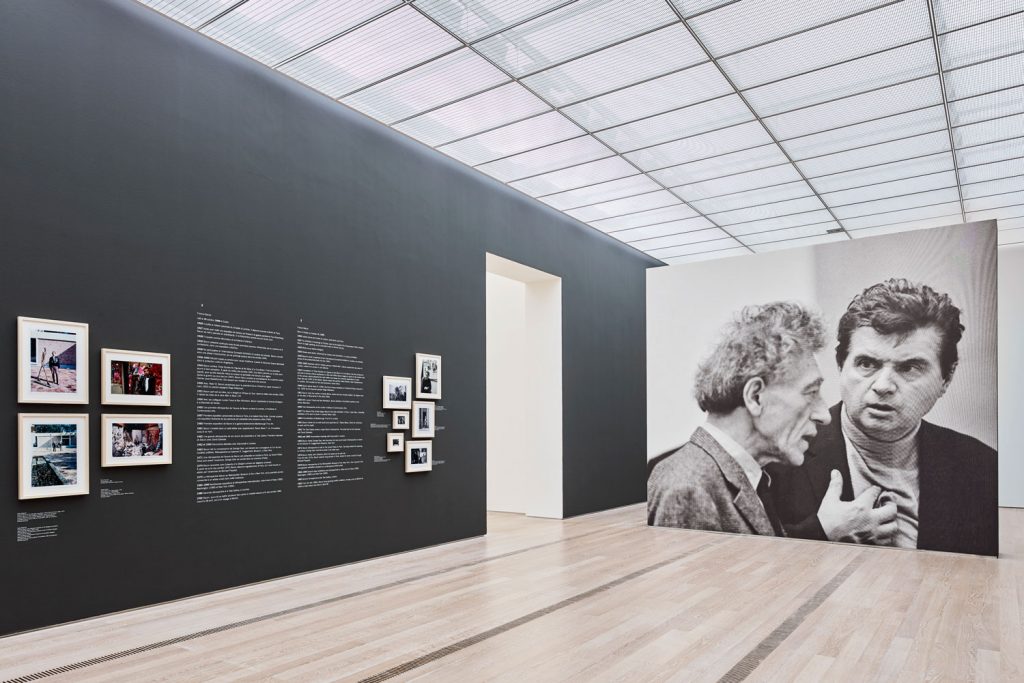
“There are formalistic and intellectual connections, but most of all, it is amazing how the works resonate when you see them together—this obsession and torture,” said Keller. “I now see things in Giacometti that I didn’t see before.”
While Giacometti and Bacon both claimed to be “realists” during their lifetimes, there is an evident continuous exploration of abstraction. Their almost rhythmic manipulation of the human body revealed as much the emotional state of the sitter as it did new ways of viewing reality.
Recommended: Alberto Giacometti’s Paris Workspace is Gloriously Recreated
Giacometti’s large and prominent Le Nez (1947-49), a sculpture of a head with an elongated nose, greets the viewer in the next space, positioned on its own with Bacon’s Head VI (1949). The Pinocchio-like nose extends out to Bacon’s screaming painted head, giving the viewer a taste of the electrifying and evocative horror that is to come in the next rooms.
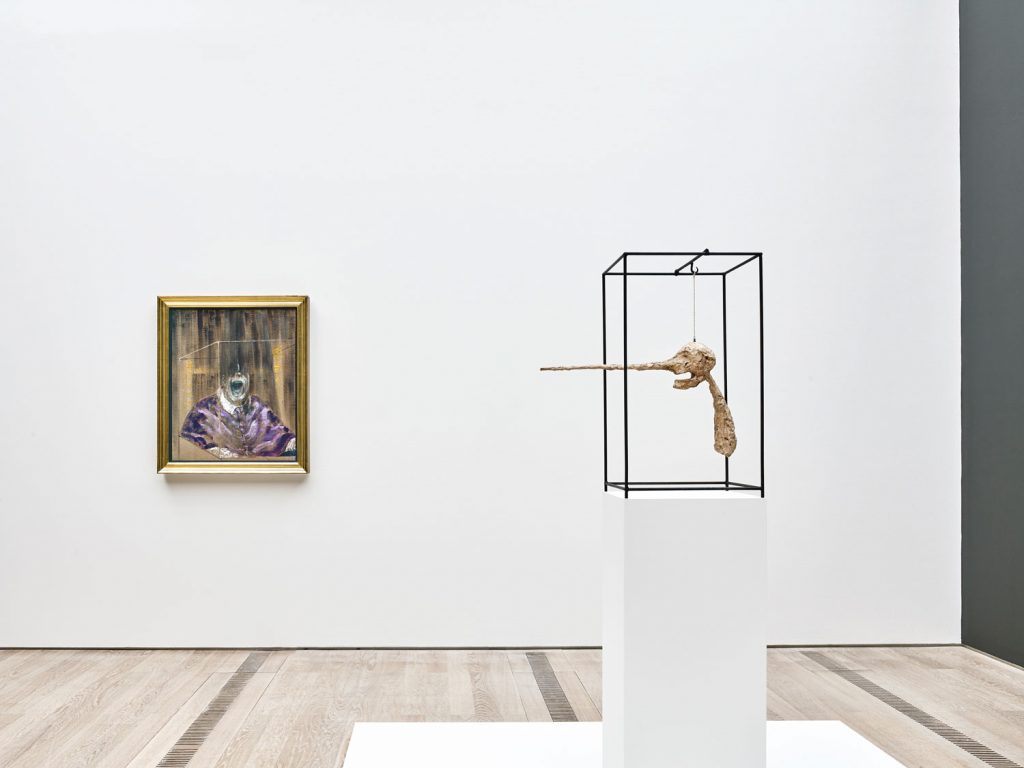
In a room titled The Cage, we find a somber mix of works detailing both artists’ desire to better understand space and perspective. Here, many of Giacometti’s sculptures appear so emaciated that they threaten to vanish before our eyes. When placed with Bacon’s heavy, nearly black paintings, they are all but lost.
In a room titled The Cage, we find a somber mix of works detailing both artists’ yearning to better understand space and perspective. Here, many of Giacometti’s sculptures appear so emaciated that they threaten to vanish before our eyes. Still they exhibit their steadfast boldness even in their needle-like existence. When juxtaposed with Bacon’s heavy, nearly black paintings, they are nearly lost.
Recommended: 8 Emerging Artists to Collect at Art Basel 2018
A series of films in an adjacent room detail the creative process of both artists.
“I work much better in chaos[…] chaos for me breeds images,” says Bacon in an interview. “What people call inspiration comes from regular work.”
When asked what he thinks about public’s disapproval of his work, the artist responds proudly: “Well, I’m very pleased to know they don’t like them because if they don’t like them then it means they (his paintings) are really doing something.”
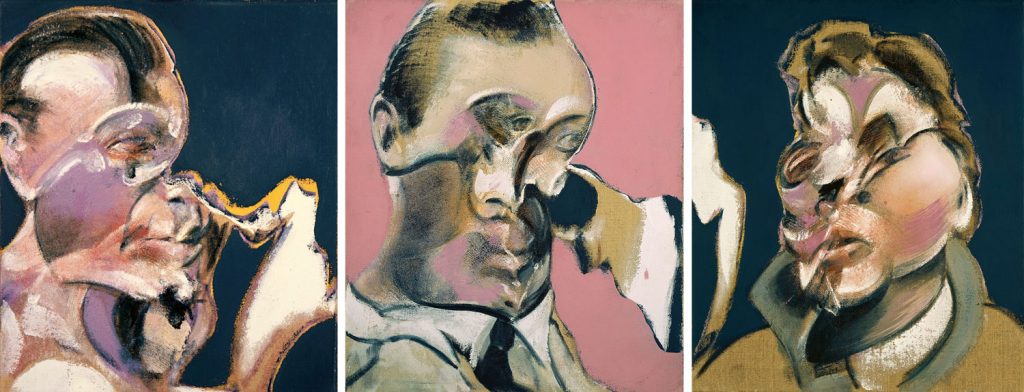
The section Portraits Sans Fin (Portraits Without End) opens with Bacon’s Study for Portrait III (after the Life Mask of William Blake) (1995) and Giacometti’s Grand tête mince (1954) and then proceeds to a series of portraits as well as triptychs by Bacon capturing the fragmented heads of several sitters in motion, including that of his lover George Dyer.
The largest room features a selection of monumental works by both artists. Giacometti’s figures towering over viewers in refined and stylized motion while Bacon’s large triptychs of fleshy figures twist and turn feverishly.
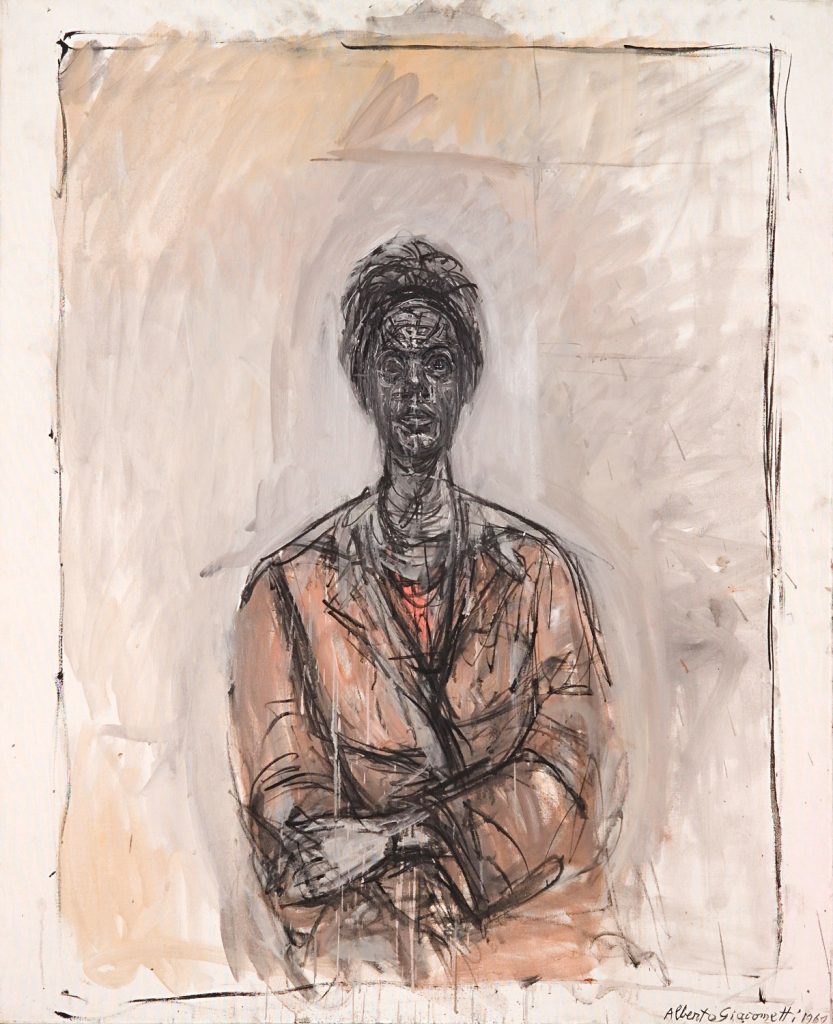
The show concludes with the section Ordre-Désordre, a smaller room of works positioning Giacometti’s female busts with their hungry gaze, and Bacon’s ever more abstract renderings of the human form. The finale is a human figure sprawled out on a bed—limbs twisted and distorted.
This electrifying pairing of Bacon and Giacometti raises questions on the nature of existence and the state of the tormented twentieth-century individual. Both artists grappled with life’s existence against the challenges of the Post-War period through unsettling creations that breathe a violent yet fragile beauty, prompting our continuous gaze.
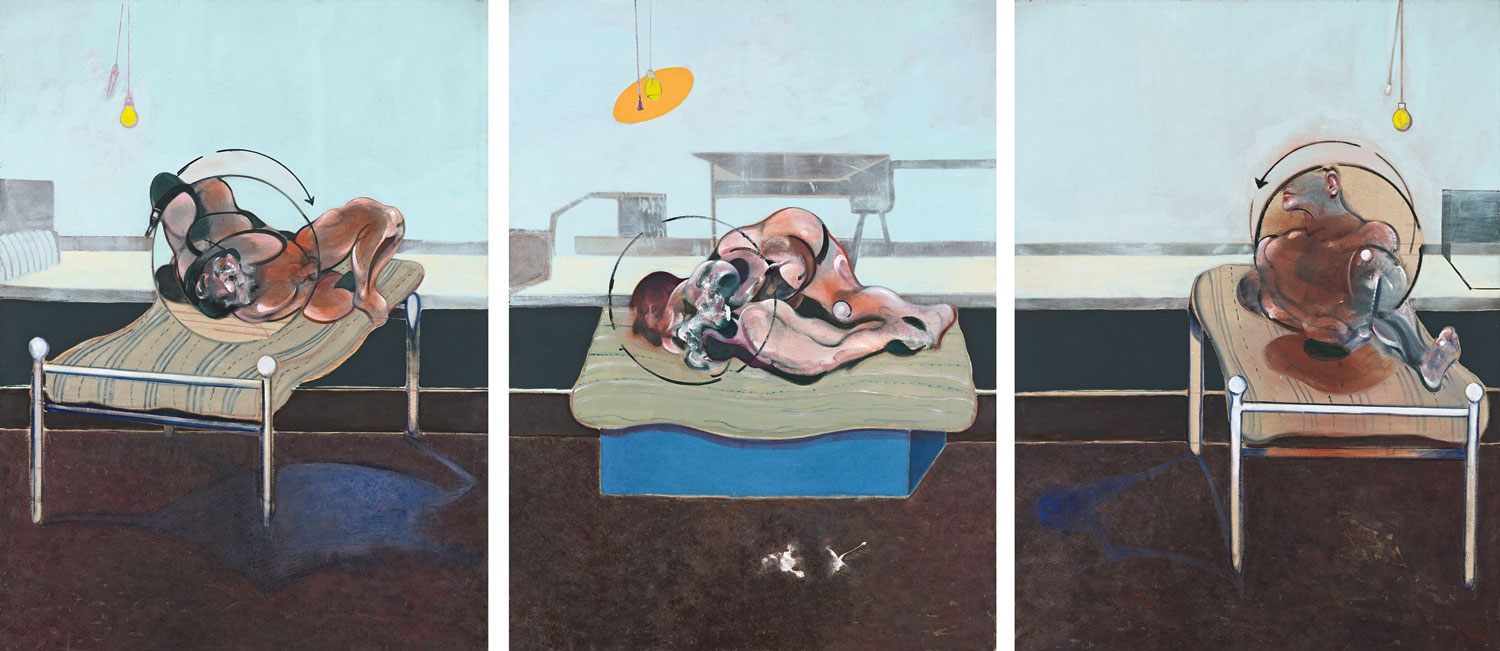
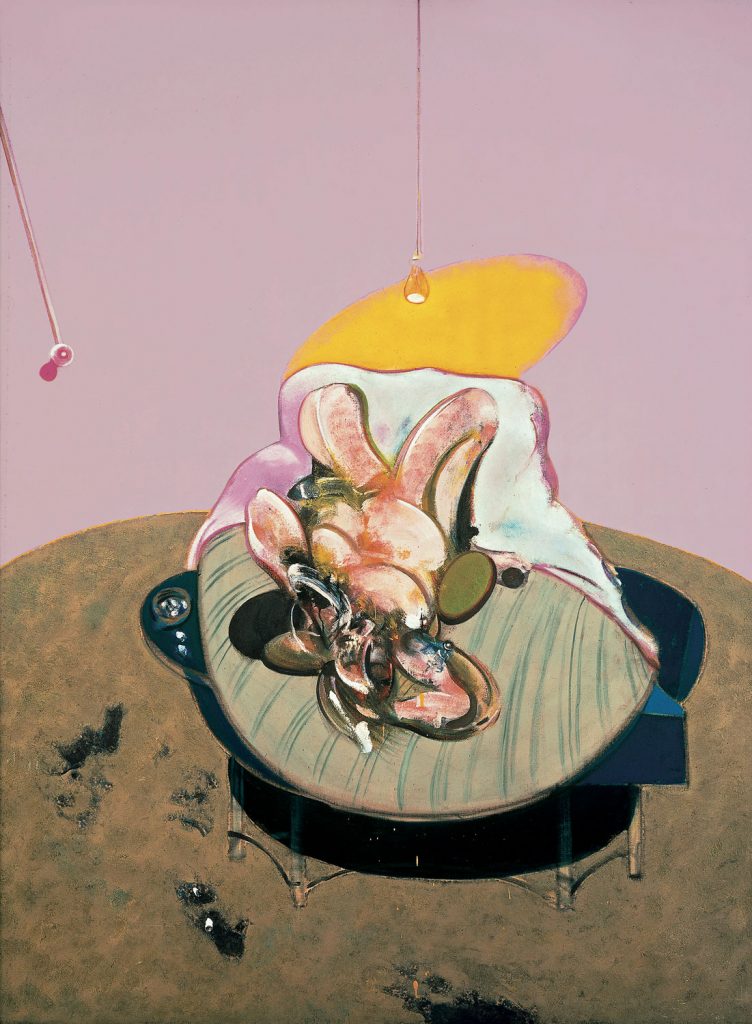
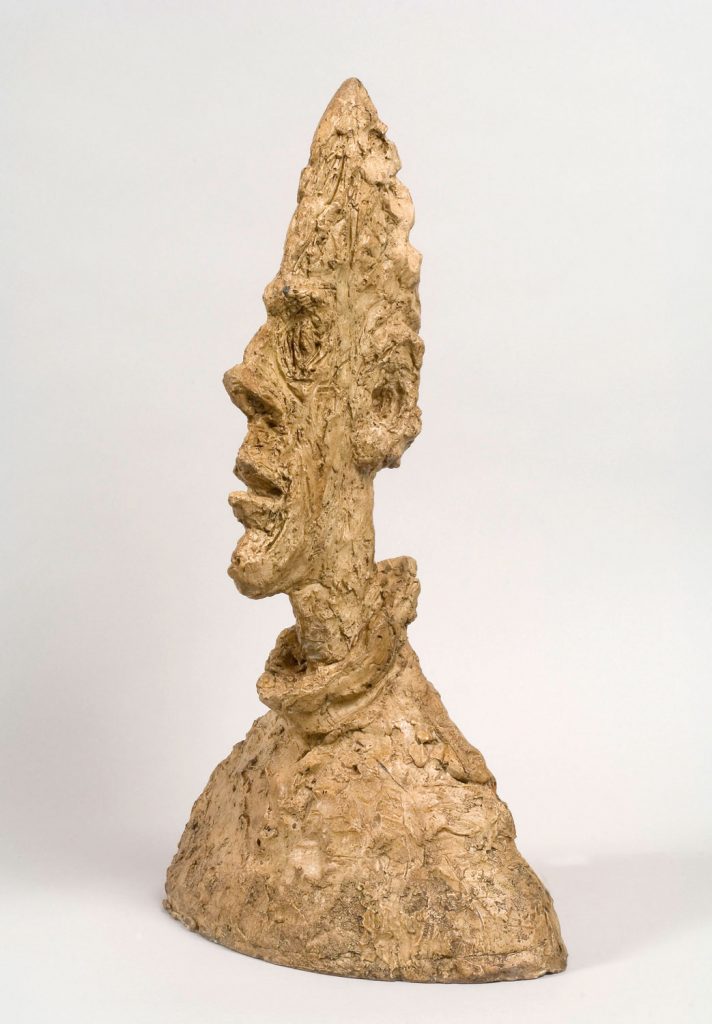
“Bacon and Giacometti,” is on view at the Fondation Beyeler, Basel, through September 2.






